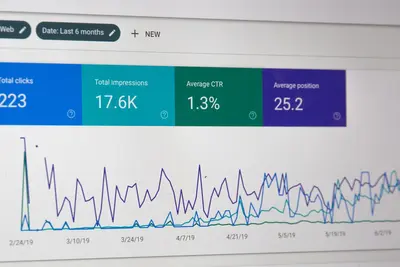Introduction
Alpine Linux is a lightweight and secure Linux distribution that has been making waves in the world of servers, containers, and embedded devices. First released in 2005, Alpine has gained significant traction in recent years, particularly in the containerization space, due to its minimal size, efficient resource usage, and security-focused design.
In this article, we’ll explore what Alpine Linux is, its key features, and why you might want to consider using it for your next project.
What is Alpine Linux?
Alpine Linux is an independent, non-commercial, general-purpose Linux distribution designed with security, simplicity, and resource efficiency in mind. Unlike many other Linux distributions that are based on giants like Debian or Red Hat, Alpine takes a different approach by building from scratch with a focus on minimalism.
The distribution is built around three core components:
-
musl libc: Instead of the more common glibc (GNU C Library), Alpine uses musl, a lightweight, fast, and secure C standard library.
-
BusyBox: Alpine includes BusyBox, which provides replacements for most common UNIX utilities in a single small executable, significantly reducing the system’s footprint.
-
OpenRC: For its init system, Alpine uses OpenRC, which is simpler and more lightweight than systemd, making it ideal for resource-constrained environments.
The base installation of Alpine Linux is remarkably small, typically around 5 MB in size. Despite this tiny footprint, it includes the standard suite of Linux utilities and provides a complete and functional operating system.
Why Use Alpine Linux?
1. Incredibly Small Size
One of Alpine’s most notable features is its minimal size. The base Docker image for Alpine Linux is only about 5 MB, compared to around 100 MB for Ubuntu and 200 MB for CentOS. This small size offers several advantages:
- Faster downloads: Smaller images mean faster download times, which is especially important in CI/CD pipelines.
- Reduced storage requirements: You can store more containers or system images in the same amount of space.
- Faster boot times: Less to load means quicker startup times.
- Ideal for containerization: The small size makes Alpine perfect for Docker containers and microservices architectures.
2. Security-Focused Design
Alpine Linux was built with security as a primary concern. Several features contribute to its enhanced security posture:
- musl libc: The musl C library is designed to be more secure than glibc, with better protection against common vulnerabilities.
- Position Independent Executables (PIE): All packages are compiled as PIE, providing better protection against certain types of attacks.
- Stack smashing protection: Built-in protection against buffer overflow attacks.
- Hardened kernel: Alpine can be configured with a hardened kernel that includes additional security patches.
3. Resource Efficiency
Alpine’s minimal design translates to excellent resource efficiency:
- Low memory footprint: Alpine requires very little RAM to run, making it ideal for embedded systems or cloud environments where resources are at a premium.
- Minimal CPU usage: The lightweight nature of Alpine means less CPU overhead for the operating system itself.
- Fast package management: The
apkpackage manager is notably faster than many alternatives.
4. Simple and Clean
Alpine follows the KISS (Keep It Simple, Stupid) principle:
- No unnecessary bloat: Alpine includes only what’s necessary, avoiding feature creep.
- Clear configuration: System configuration is straightforward and well-documented.
- Predictable behavior: The simplicity of Alpine makes it easier to understand and troubleshoot.
5. Active Development and Community
Despite being a smaller distribution, Alpine has an active development community:
- Regular updates: Security patches and updates are released promptly.
- Growing package repository: The Alpine package repository continues to expand with community contributions.
- Docker adoption: Alpine’s popularity in the Docker ecosystem has brought more developers to the community.
Common Use Cases
Container Base Images
Alpine is extremely popular as a base image for Docker containers. Many official Docker images offer Alpine variants because of the size and security benefits.
Edge Computing and IoT
The small footprint and low resource requirements make Alpine ideal for edge computing devices and Internet of Things (IoT) applications.
Virtual Private Servers (VPS)
For small VPS instances where resources are limited, Alpine can help you get the most out of your available RAM and storage.
Network Appliances
Alpine is often used in routers, firewalls, and other network appliances due to its security features and minimal resource usage.
Development and Testing
Alpine’s simplicity makes it an excellent choice for development and testing environments where you need a clean, minimal system.
Getting Started with Alpine Linux
If you’re interested in trying Alpine Linux, here’s how to get started:
Download Alpine Linux
Visit the official Alpine Linux website at https://alpinelinux.org and download the appropriate ISO for your needs:
- Standard: Full installation media with a selection of packages
- Extended: Includes additional firmware and drivers
- Virtual: Optimized for virtual machines
- Netboot: Minimal image for network installations
Installation Options
You can run Alpine Linux in several ways:
- Virtual Machine: Use VirtualBox, VMware, or KVM to run Alpine in a VM
- Docker Container: Pull the official Alpine image with
docker pull alpine - Bare Metal: Install directly on physical hardware
- Live USB: Create a bootable USB drive for testing without installation
Basic Usage
Once you have Alpine running, familiarize yourself with the apk package manager:
# Update package index
apk update
# Search for packages
apk search package-name
# Install a package
apk add package-name
# Remove a package
apk del package-name
# Upgrade all packages
apk upgradeConsiderations and Limitations
While Alpine Linux offers many advantages, it’s important to be aware of some considerations:
musl libc Compatibility
Some software compiled for glibc may not work correctly with musl. While most common software has been ported to work with musl, you might encounter compatibility issues with certain proprietary or legacy applications.
Learning Curve
If you’re used to systemd-based distributions, there will be a learning curve with Alpine’s OpenRC init system and different default tools.
Package Availability
While Alpine’s package repository is growing, it’s not as extensive as Debian’s or Fedora’s. You might need to compile some software from source.
Documentation
Being a smaller distribution, Alpine sometimes has less third-party documentation and fewer Stack Overflow answers compared to more popular distributions.
Conclusion
Alpine Linux represents a refreshing approach to Linux distribution design, prioritizing security, simplicity, and efficiency over feature richness. Its minimal footprint, robust security features, and excellent performance make it an ideal choice for containers, embedded systems, and any scenario where resources are at a premium.
Whether you’re building Docker containers, deploying edge computing solutions, or simply want a lightweight and secure Linux distribution, Alpine Linux deserves serious consideration. Its growing adoption in the containerization world is a testament to its effectiveness in modern computing environments.
As the computing world continues to move toward containerization and edge computing, distributions like Alpine Linux that prioritize efficiency and security will likely become even more important. Give Alpine a try, and you might find that less really is more.




